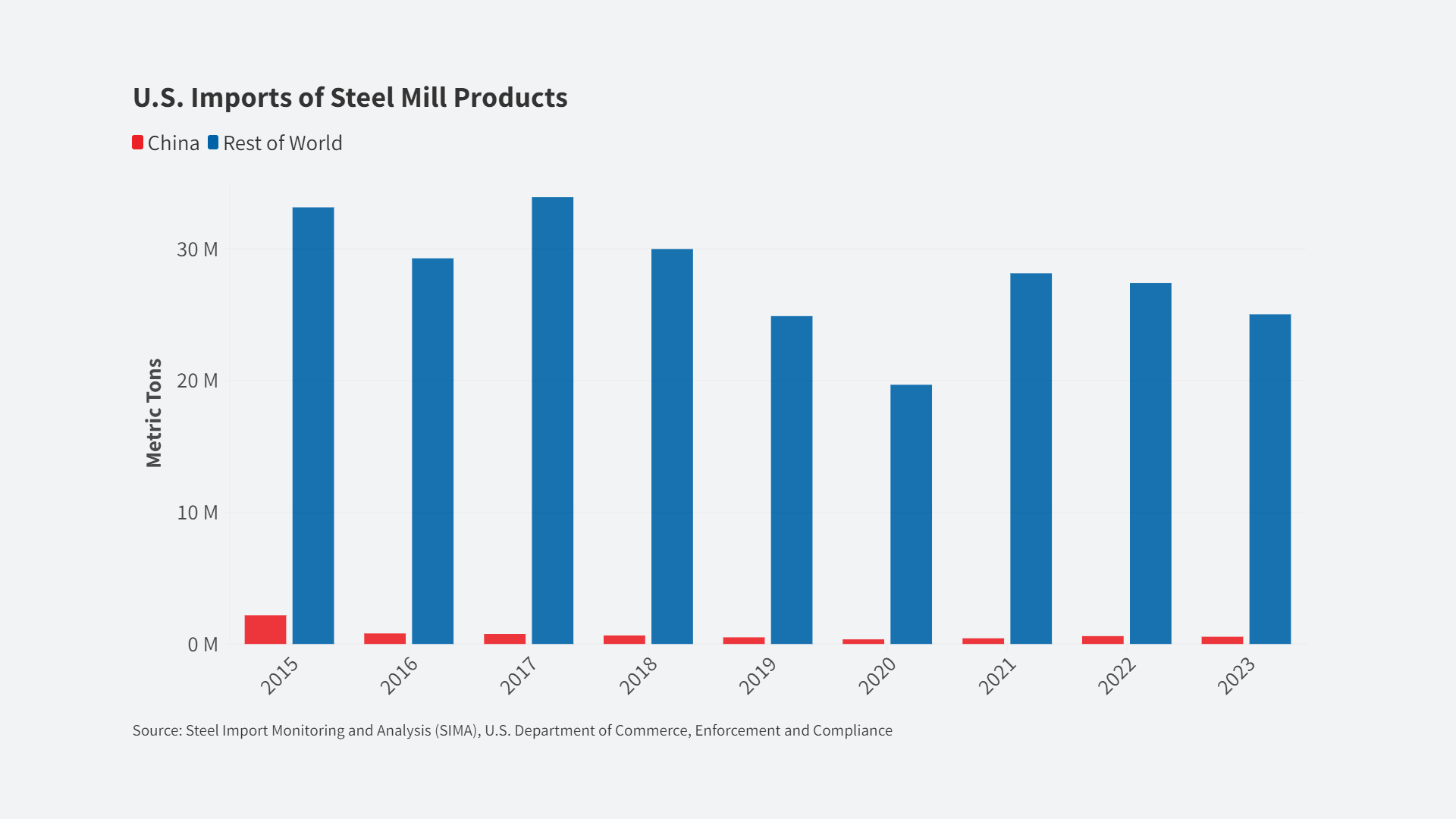
Trade Deficits Surge under FTAs: U.S. Trade Deficits Grow More than 425% with FTA Countries, but Decline 11% with Non-FTA Countries
The aggregate U.S. goods trade deficit with Free Trade Agreement (FTA) partners is more than five times as high as before the deals went into effect, while the aggregate trade deficit with non-FTA countries has actually fallen. The key differences are soaring imports into the United States from FTA partners and lower growth in U.S. exports to those nations than to non-FTA nations. Growth of U.S. exports to FTA partners has been 20 percent lower than U.S. export growth to the rest of the world over the last decade (annual average growth of 5.3 percent to non-FTA nations vs. 4.3 percent to FTA nations from 2004 to 2014).1
The aggregate U.S. trade deficit with FTA partners has increased by about $144 billion, or 427 percent, since the FTAs were implemented. In contrast, the aggregate trade deficit with all non-FTA countries has decreased by about $95 billion, or 11 percent, since 2006 (the median entry date of existing FTAs). Using the Obama administration’s net exports-to-jobs ratio, the FTA trade deficit surge implies the loss of about 780,000 U.S. jobs. The North American Free Trade Agreement (NAFTA) contributed the most to the widening FTA deficit – under NAFTA, the U.S. trade deficit with Canada has ballooned and a U.S. trade surplus with Mexico has turned into a nearly $100 billion deficit. More recent deals have produced similar results. Under the 2012 Korea FTA, the U.S. template for the Trans-Pacific Partnership, the U.S. trade deficit with Korea has already surged 72 percent.

Members of Congress will often shown misleading and selective data by Fast Track proponents that appear to indicate that FTAs have generated an export boom. This work relies on several methodological tricks that fail basic standards of accuracy:
– Ignoring imports: U.S. Chamber of Commerce studies regularly omit mention of soaring imports under FTAs, instead focusing only on exports.4 But any study claiming to evaluate the net impact of trade deals must deal with both sides of the trade equation. In the same way that exports are associated with job opportunities, imports are associated with lost job opportunities when they outstrip exports, as dramatically seen under FTAs.
– Counting “foreign exports”: NAM has errantly claimed that the United States has a manufacturing surplus with FTA nations by counting foreign-made goods as “U.S. exports.” NAM’s data include “foreign exports” – goods made elsewhere that pass through the United States without alteration before being re-exported abroad. Foreign exports support zero U.S. production jobs and their inclusion distorts FTAs’ impacts on workers.5
– Omitting major FTAs: The U.S. Chamber of Commerce has repeatedly claimed that U.S. export growth is higher to FTA nations that to non-FTA nations by simply omitting FTAs that do not support their claim. One U.S. Chamber of Commerce study omitted all FTAs implemented before 2003 to estimate export growth.6 This excluded major FTAs like NAFTA that comprised more than 83 percent of all U.S. FTA exports. Given NAFTA’s leading role in the 427 percent aggregate FTA deficit surge, its omission vastly skews the findings.
– Failing to correct for inflation: U.S. Chamber of Commerce studies that have claimed high FTA export growth have not adjusted the data for inflation, thus errantly counting price increases as export gains.7
– Comparing apples and oranges: The U.S. Chamber of Commerce has claimed higher U.S. exports under FTAs by using two completely different methods to calculate the growth of U.S. exports to FTA partners (an unweighted average) versus non-FTA partners (a weighted average).7 This inconsistency creates the false impression of higher export growth to FTA partners by giving equal weight to FTA countries that are vastly different in importance to U.S. exports (e.g. Canada, where U.S. exports exceed $260 billion, and Bahrain, where they do not reach $1 billion), despite accounting for such critical differences for non-FTA countries.
ENDNOTES
1 Trade figures in this document use U.S. domestic exports and imports for consumption data from U.S. International Trade Commission, “Interactive Tariff and Trade DataWeb,” accessed February 11, 2015. Available at: http://dataweb.usitc.gov/. All data is inflation-adjusted using the CPI-U-RS series of the Bureau of Labor Statistics. The average annual export growth comparison accounts for the entry of new FTA nations.
2 The administration estimates that $1 billion in U.S. goods exports supports 5,400 U.S. jobs. Michael Froman, “2014 Trade Policy Agenda and 2013 Annual Report of the President of the United States on the Trade Agreements Program,” Office of the U.S. Trade Representative, March 2014, 2. Available at: http://www.ustr.gov/sites/default/files/2014%20Trade%20Policy%20Agenda%20and%202013%20Annual%20Report.pdf.
3 See Jim Kessler and Gabe Horwitz, “Are Modern Trade Deals Working?” Third Way, February 12, 2015. Available at: http://www.thirdway.org/report/are-modern-trade-deals-working.
4 See U.S. Chamber of Commerce, “NAFTA Triumphant: Assessing Two Decades of Gains in Trade, Growth, and Jobs,” 2014. Available at: https://www.uschamber.com/sites/default/files/documents/files/1112_INTL_NAFTA_20Years.pdf.
5 See National Association of Manufacturers, “Manufacturing and Trade – Bilateral Trade,” 2014. Available at: http://www.nam.org/Issues/Trade/Manufacturing-And-Trade-Bilateral-Trade.aspx.
6 U.S. Chamber of Commerce, “Estimated Impact of the U.S. Trade Agreements with Colombia, Panama and South Korea for U.S. Merchandise Exports,” September 2008. Available at: http://www.uschamber.com/sites/default/files/reports/0809_latin_tpas.pdf.
7 See Laura M. Baughman and Joseph F. Francois, “Opening Markets, Creating Jobs,” U.S. Chamber of Commerce, May 14, 2010. Available at: http://www.uschamber.com/sites/default/files/reports/100514_ftajobs_full_0.pdf.
8 Article based on Public Citizen analysis. www.citizen.org













